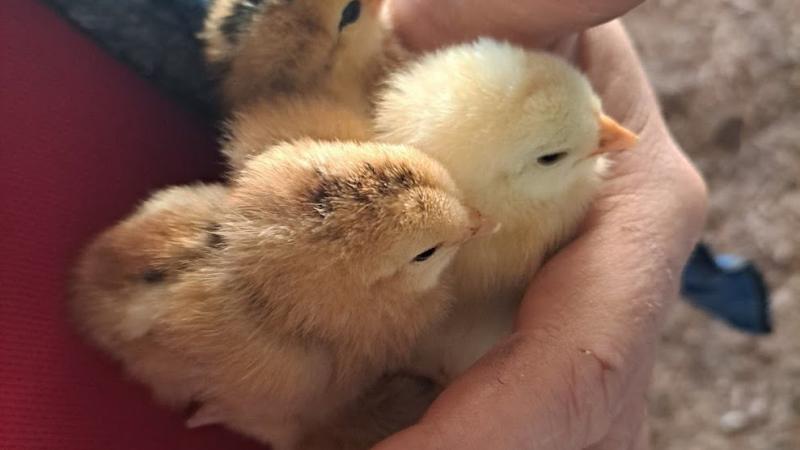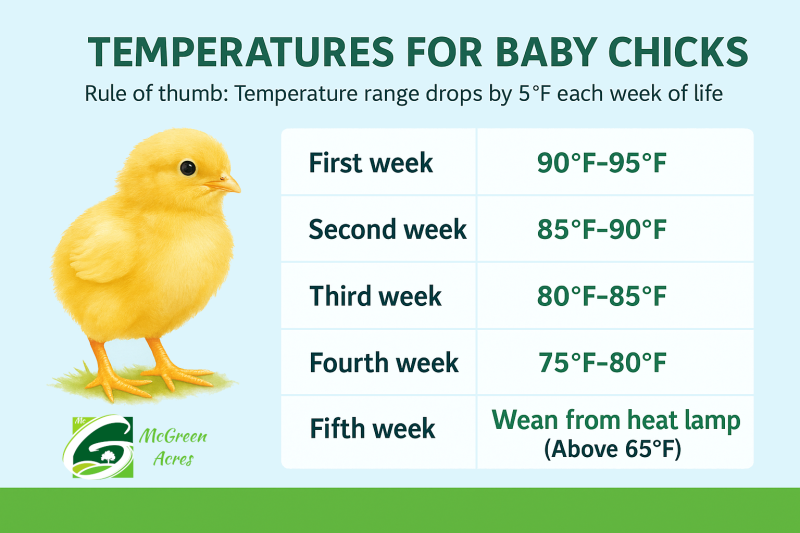Bringing home baby chicks is an exciting experience. Their fluffy, poofy cheeks make it easy to fall in love! But as adorable as they are, caring for them requires attention to detail. Whether you're raising them for eggs or as pets, here's what you need to know to get started.
1. Housing and Heat
Chicks need warmth, especially in their first few weeks. Here's a quick guide to heating requirements:
A good rule of thumb is to reduce the heating by 5°F each week until reaching the nighttime temperature outside.
Best Places for Chicks:
-
Inside the House: A plastic tub with pine shavings or shredded paper for bedding works well. A heat lamp can keep them warm, but make sure they can move away from it if needed.
-
In the Garage: Not ideal, but you can make it work with a space heater. Just be cautious of temperature fluctuations and ensure proper ventilation.
-
Outdoors: A secure, dry coop with temperature control is essential. If you can't provide all three things, wait until the chicks are at least 6 weeks old and temperatures are above 65°F before moving them outside.
2. Water and Food
Fresh water and quality feed are critical. Make sure to provide clean water at all times and feed formulated for chicks. For hatchlings, the food is called starter. For chickens above 4-6 weeks old, the food is called grower. For game or show birds, choose a feed with 24%+ protein. Add chick grit for digestion.
3. Hygiene and Health
Regularly clean bedding to prevent bacteria buildup. Use pine shavings or clean shredded paper. Watch for common health issues like pasty butt, which can be caused by dehydration or stress. Providing electrolytes and dust baths can help keep them healthy. Just ensure that they have access to regular clean water in addition to electrolytes.
4. Transitioning from Tub to Coop
When the chicks are about 5-6 weeks old and their feathers are developed, it’s time to move them from their indoor brooder to a coop. Make the transition gradual to avoid stress and temperature shock.
Final Thoughts
Caring for chicks takes time and attention, but the reward is worth it. By providing the right temperature, food, and space, you'll ensure your chicks grow into strong, healthy adults.



